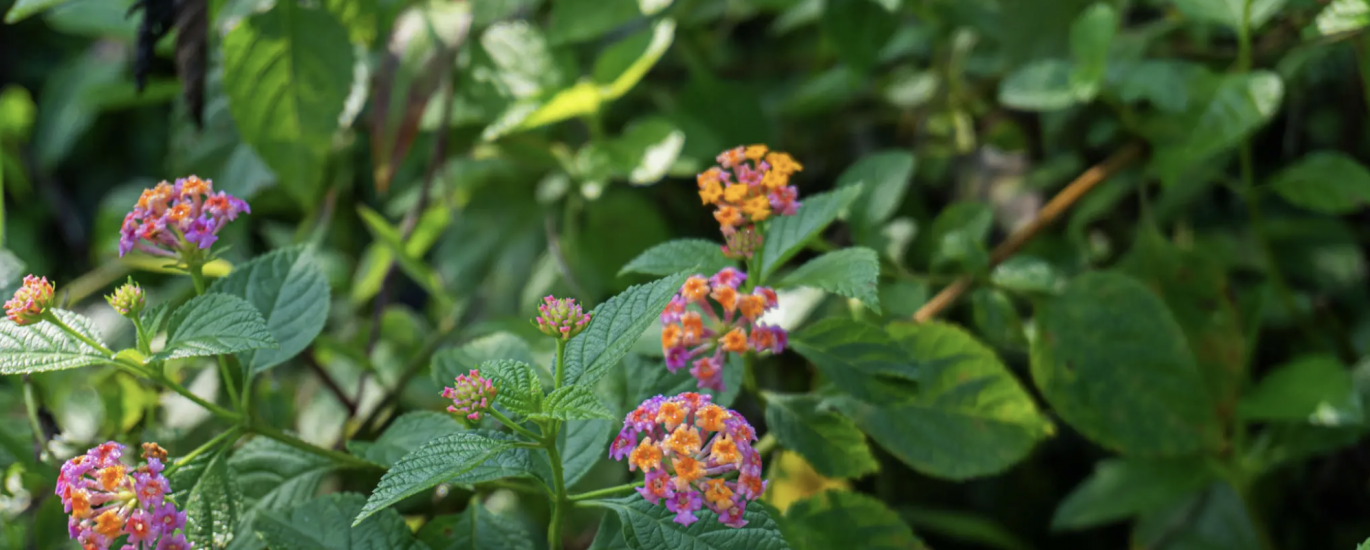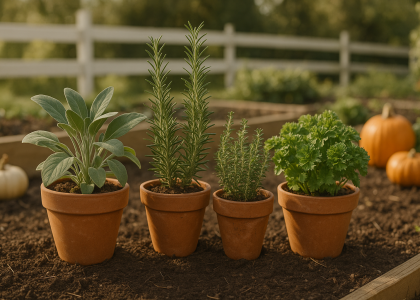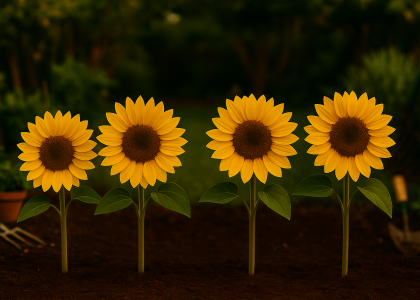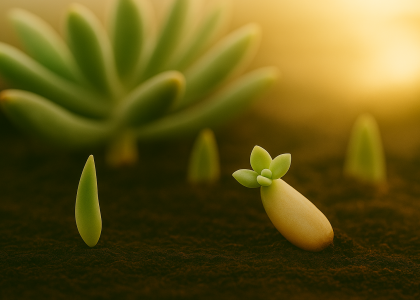Discover why Lantana is the ultimate low-maintenance, high-impact plant for gardeners who crave color, pollinators, and drought resistance. Whether you're planting in rocky soil, balcony pots, or pollinator beds, Lantana will bloom through the heat—and bring the butterflies with it.
What Is Lantana?
Lantana is a heat-tolerant perennial (often grown as an annual in cooler zones) known for its tight, rounded clusters of flowers that shift colors as they mature—often blending pink, orange, yellow, and red in a single bloom.
Common Garden Types:
- Lantana camara – Most common; vibrant, sprawling; available in mixed or solid colors
- Lantana montevidensis (Trailing Lantana) – Ideal for hanging baskets or ground cover; soft lavender-purple tones
- Compact cultivars – Great for container gardens (e.g. 'Luscious Marmalade', 'Bandana Cherry')
Lantana doesn’t whisper beauty—it shouts it with color.
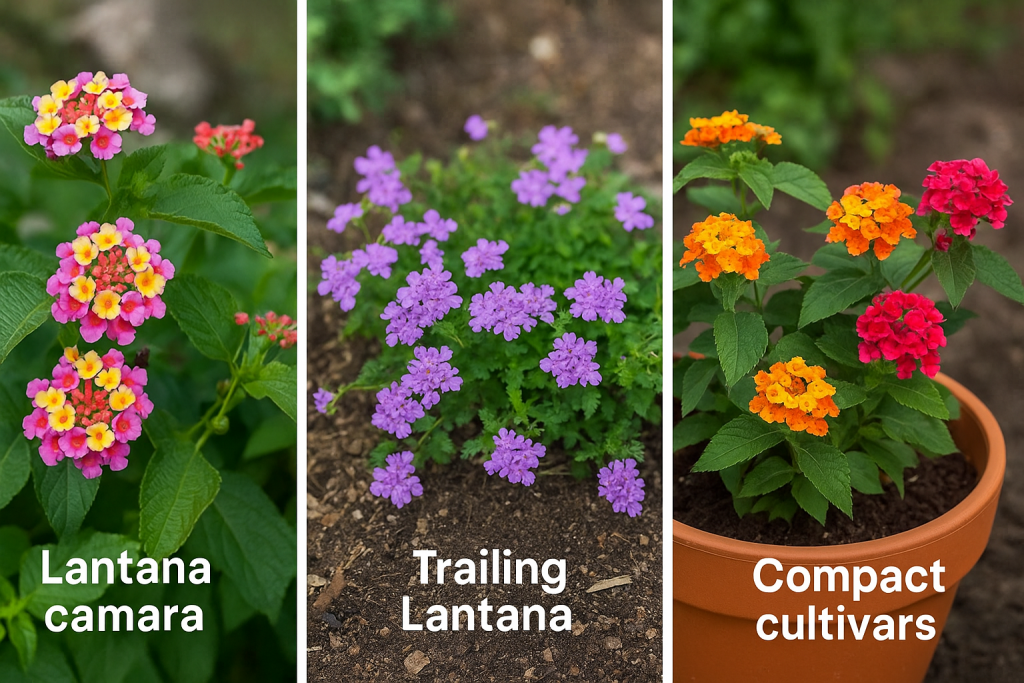
Thrives in Sun, Survives in Drought
Lantana is famous for its heat and drought tolerance. Once established, it requires little water, making it ideal for xeriscaping and eco-conscious landscapes.
- Full sun (6–8+ hours per day) is essential for best bloom
- Tolerates sandy, poor, or dry soils
- Extremely low maintenance once rooted
The hotter and brighter, the better.
Pin this: Best sun-loving flowers for dry soil!
A Magnet for Pollinators
Lantana is among the best butterfly-attracting plants, especially in warm regions. Its constant blooms and sweet scent make it irresistible to:
- Butterflies – Like Monarchs, Swallowtails, and Painted Ladies
- Bees – Particularly native bees in dry regions
- Hummingbirds – Especially drawn to red and orange blooms
Plant lantana in drifts or near seating areas to enjoy a living kaleidoscope all summer long.
To grow lantana is to invite joyful motion and natural connection.

Best Uses for Lantana
Whether upright or trailing, lantana fits into many garden settings:
- Drought-tolerant garden beds
- Rock gardens and sandy coastal landscapes
- Containers and balcony planters
- Hanging baskets with trailing cultivars
- Pollinator pathways and native habitat borders
Pairs well with:
- Salvia, coreopsis, verbena, ornamental grasses
Lantana plays beautifully in wild, sensory-rich designs.
Save this layout for your pollinator planter ideas!
How to Grow Lantana
| Feature | Detail |
| Sunlight | Full sun (6–8+ hours) |
| Soil | Well-draining, sandy or loamy |
| Watering | Low once established |
| Bloom Time | Late spring through frost |
| Height Range | 12"–48" depending on variety |
| Growth Habit | Bushy, mounding, or trailing |
| Zones | USDA 8–11 perennial; annual elsewhere |
Beginner Tips:
- Prune lightly to encourage compact growth
- Avoid overwatering—roots dislike soggy soil
- Remove spent flowers to promote more blooms (optional)
Lantana FAQs
Q: Is lantana invasive?
A: In warm, frost-free regions, Lantana camara can spread aggressively if not maintained. Choose sterile cultivars or prune regularly.
Q: Can I grow lantana in pots?
A: Absolutely. Compact or trailing varieties do beautifully in containers with full sun and well-drained soil.
Q: Should I deadhead lantana?
A: It’s optional! Lantana blooms heavily without it, but removing spent flowers can tidy the plant and encourage new blooms.
Q: Will lantana grow in poor soil?
A: Yes—Lantana thrives in sandy, rocky, or low-fertility soils with minimal care.
Pin this FAQ to your drought-tolerant gardening board!
Emotional Wellness & Energy
Lantana’s vibrant colors and continuous motion create a deeply sensory experience:
- Bright blooms lift mood and energy
- Butterflies offer daily nature therapy
- Sun-drenched color contrasts bring joy and vitality
Lantana invites you to slow down, notice the wild, and celebrate the sun.
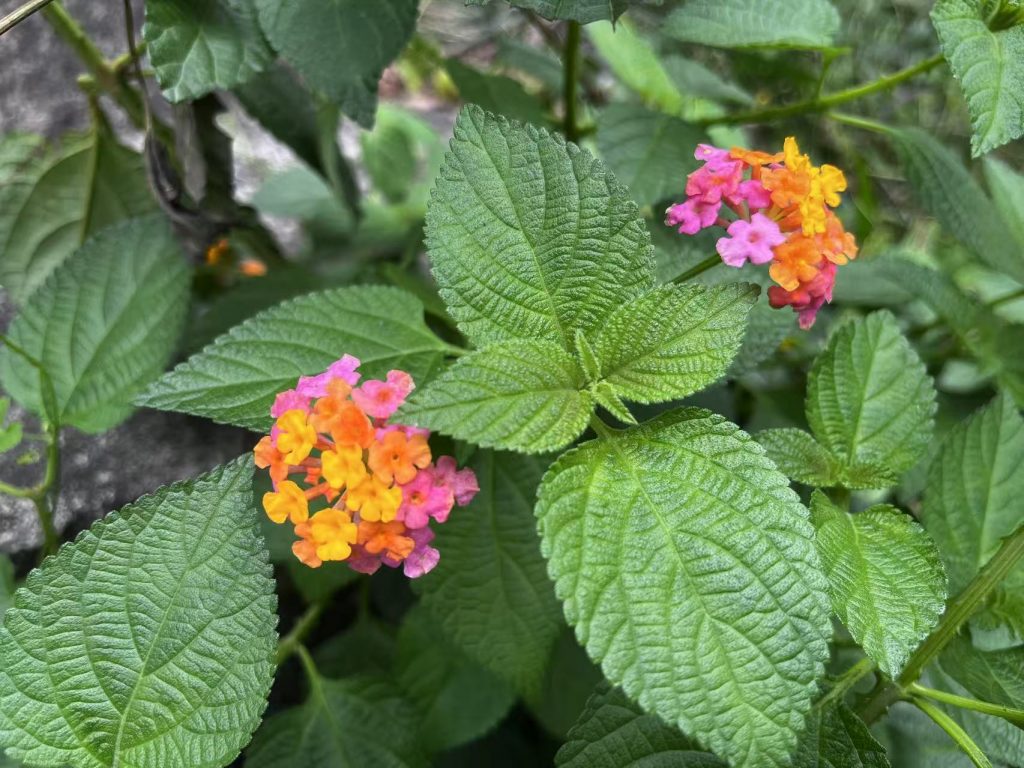
Why Lantana Belongs in a Our Garden
- Drought-tolerant and low-resource
- High-impact, pollinator-friendly
- Sensory-rich and beginner-ready
Whether you're creating a sun-drenched border, a heat-proof balcony pot, or a butterfly sanctuary, lantana shows up strong—and keeps blooming back.
Grow lantana where the sun is strong, and joy will follow.
Download Your Free Lantana Bloom Guide
Want an easy-to-follow planting and care reference? Grab your printable PDF with:
- Top heat-tolerant cultivars
- Bloom timeline and pruning tips
- Companion planting guide
Or explore more sustainable planting inspiration at Greenmuse.io—where color and calm meet purpose.
Pin this to your Drought-Tolerant Garden board and let your yard bloom bright.
Related Reads You Might Like
- Top Flowers for Dry, Sunny Gardens
- Butterfly Garden Essentials: Best Blooms for Wings & Wonder
- Lantana vs. Verbena: Which Colorful Spiller is Right for You?
Greenmuse: Where bold color meets soul-deep calm.

